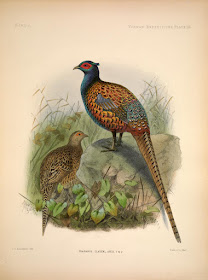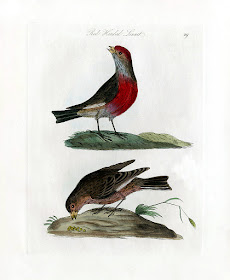'The State of The UK's birds 2012', a joint publication by the BTO, RSPB, WWT and five other conservation bodies has just been published and has been garnering a good deal of press coverage. The headline news that '44 million birds have been lost in the UK since 1966' seems to have hit a nerve in the public body and even my local radio station has been covering this story in some depth: interviewing local birders as part of the coverage. These 44 million birds equate to a breeding pair lost every minute since 1966! This being the case it comes as no surprise that the press has picked up on this story. The 40 page booklet reports on the latest results from bird monitoring in the UK and its overseas territories. The first headline from this report that worries is the news that both the Long-tailed Duck and the Velvet Scoter are threatened with global extinction!
.jpg) |
| Long-tailed Duck -Adult Winter Male |
The UK's overseas territories hold some of the world's most vulnerable species and these are being threatened by fishery by-catch, oil spills, the building of airports and volcanic action. So the odds are stacked-up very much against survival for some of these birds.
The report begins by emphasising the vital role played by all of the volunteers involved in collecting the data through such schemes as the Garden Birdwatch; The Nest Record Scheme; The Breeding Birds Survey and the Wetland Birds Survey amongst others and calls this whole process
'Citizen Science.' An apt moniker I think.
There is a table covering two pages titled
'Trends in Common Breeding Birds In the UK' and this is becoming more and more ironic each year as many of the species covered are becoming far from common. A good number of birds are increasing but some of the losses are staggering: Willow Tit down by 93% since 1970...why?
Willow Tit
Starling down by 80%, Spotted Flycatcher - 88%, Tree Sparrow - 91%, Corn Bunting - 90%. Curlews are down by 61% and Cuckoos down by 62%. And don't expect to get Turtle Dove on your year list in the future - down by 93%
Turtle Dove
There are a couple of pages on monitoring seabirds and for some species in decline there is some understanding of the causes: such as the decrease in Kittiwake numbers being partly attributable to falling sandeel numbers: reduced prey availability is an obvious cause of decline.
Kittiwake
There are sections dedicated to waterbirds, both along the coast and at inland waters and populations of overwintering migrants as well as sections on non-native birds and a three page spread on the UK's overseas territories. The report states:
'By combining new population estimates with known species trends, we can estimate how totals of birds have varied since the 1960s.The total number of breeding pairs in the UK has fallen over this period, from 105 to 83 million – a loss of 22 million pairs (21%). Numbers remained roughly stable either side of a substantial decline between the mid-1970s and mid-1980s: 27 million pairs of breeding birds were lost from the UK between 1975 and 1987'
The report is detailed on specifics - it gives cold, dispassionate facts based on rigorous scientific research and data gathering and analysis. What it does not do so well is give reasons for declines or indeed expansions in bird numbers. It's not the job of these organisations to speculate too much or make guesses but ocassionally suggestions are mentioned as in the case of seaduck declines:
'The causes of seaduck declines are unclear, although a number of reasons have been suggested: climate change, oil pollution, by-catch in gill nets, over-harvesting (some seaducks are legal quarry elsewhere in Europe), changes in levels of eutrophication, predation and various industrial developments. However, there is insufficient knowledge about how these impact seaduck numbers – more research is needed before we understand what is driving declines'
There are so many ways to help conduct this research and the report finishes with half a dozen pages dedicated to ways in which people can get involved - proper Citizen Science!
The good news is that Common Buzzard numbers are up by 439% - who'd have guessed it!
Common Buzzard
The State of the UK’s Birds 2012 report is produced by a coalition of three NGOs - RSPB, British Trust for Ornithology (BTO), and the Wildfowl & Wetlands Trust – and the UK Government’s statutory nature conservation agencies - the Countryside Council for Wales (CCW), Natural England (NE), Northern Ireland Environment Agency (NIEA), Scottish Natural Heritage (SNH), and the Joint Nature Conservation Committee. (JNCC).













.jpg)


.jpg)
.jpg)








.jpg)
.jpg)
.jpg)
.jpg)
.jpg)




